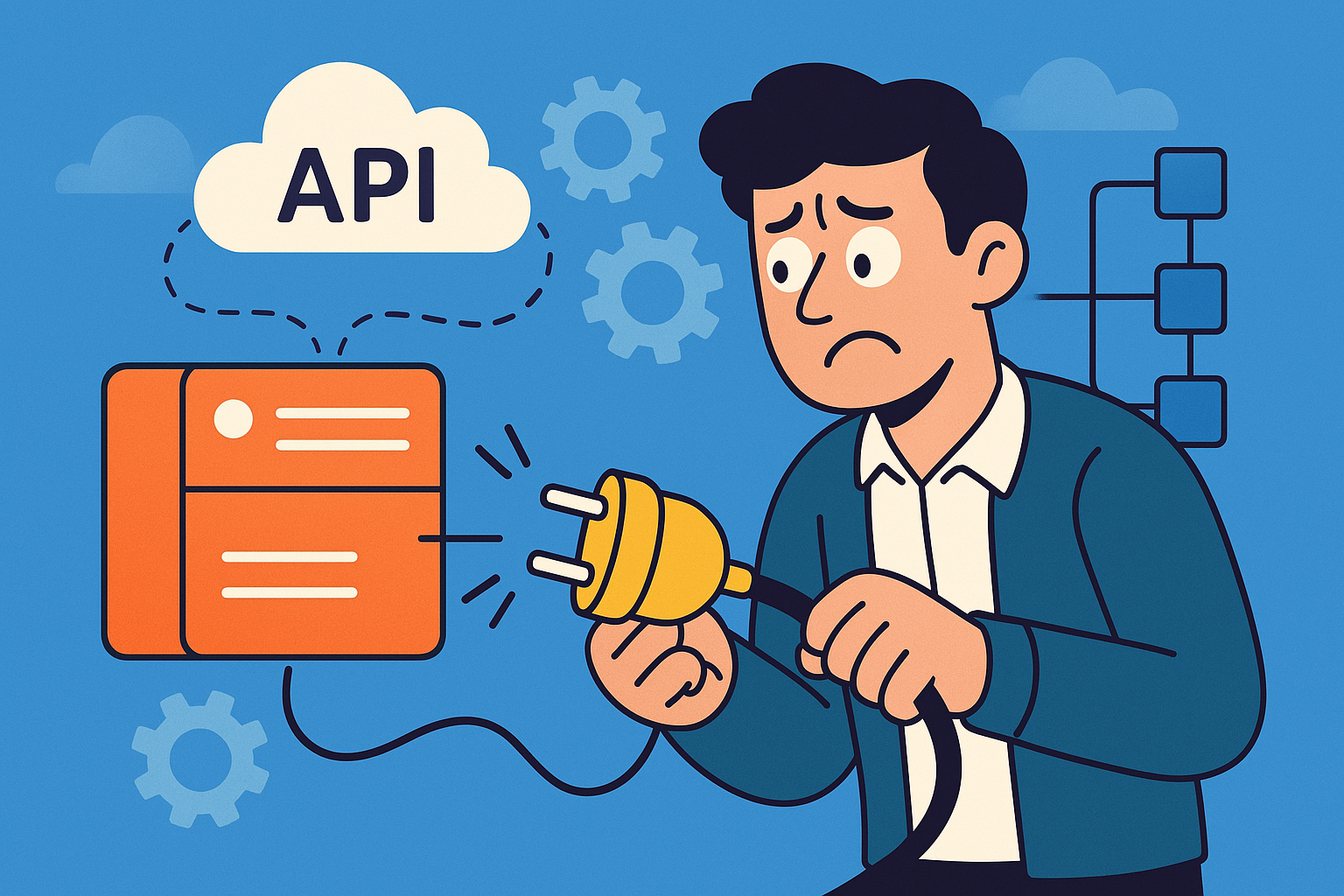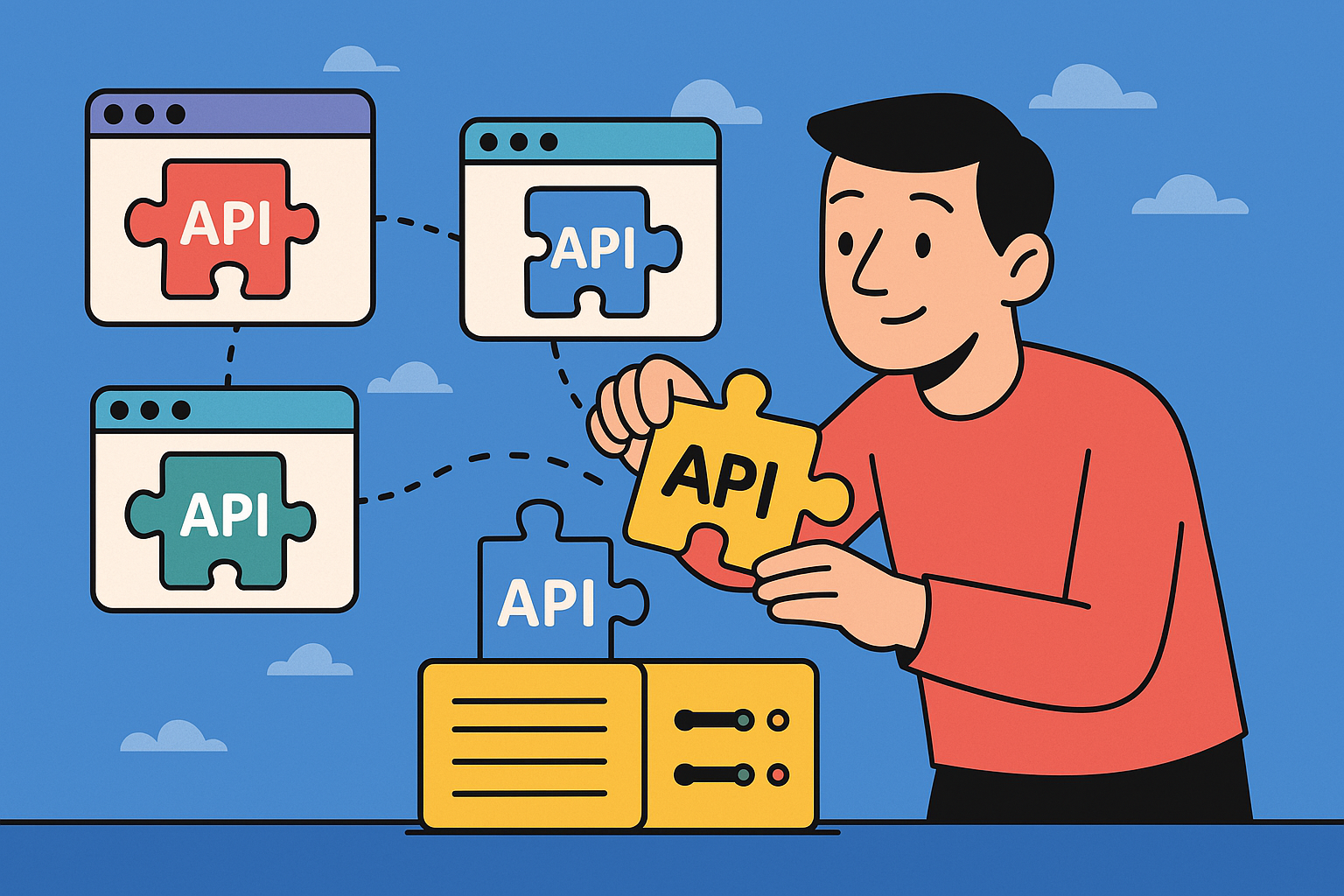Let’s talk about integration.
Specifically, why most of us—yes, even experienced developers—are still doing it wrong.
I’ve been in the trenches of enterprise integration long enough to know that the go-to solution is often the worst one. We reach for what’s familiar: point-to-point connections, fragile middleware stacks, or some Frankenstein combo of both. It gets the job done... temporarily. But if you’ve ever had to untangle a spaghetti mess of one-off connectors or debug a brittle middleware chain at 2 a.m., you know exactly what I’m talking about.
Integration isn’t just about “connecting stuff.” It’s about creating a system that’s scalable, maintainable, and actually built for the future—not just your next deadline.
So here’s the hard truth: If your integration strategy doesn’t start with APIs, you’re building a house of cards.
The Point-to-Point Trap
Point-to-point is the duct tape of integration. Quick. Dirty. And destined to fall apart under pressure.
It starts innocently enough—hook System A to System B. Maybe System C joins the party. Before long, you’re running a tangled web of connections that no one fully understands. Need to replace one of those systems? Good luck. Want to reuse logic across the org? Forget it. You’ve created a brittle monster that scales like a stack of toothpicks.
The worst part? It feels productive—until it collapses.
Middleware Isn’t a Magic Wand
Then there’s the middleware approach. Bus-based systems, ETL tools, and workflow engines have their place—but they’re often used as a crutch to patch over deeper architectural flaws.
Middleware gives you abstraction, sure, but abstraction without clarity just creates complexity. I’ve seen middleware layers become so bloated and black-boxed that no one actually knows what’s happening under the hood. That’s not integration—that’s obfuscation.
The Silo Problem
And let’s not forget siloed systems. You can build the prettiest apps in the world, but if they’re hoarding their data and logic like dragons guarding gold, your enterprise will never move fast enough to keep up.
Integration is supposed to break down walls, not reinforce them.
The API-First Mindset: What Actually Works
Here’s the approach we take at Lonti:
Integration starts with APIs. Always.
Not because it’s trendy. Because it works.
An API-led strategy forces you to think in reusable, composable units. It decouples systems. It gives teams autonomy. And it creates a foundation that can evolve without constant rewrites and workarounds.
With APIs as the backbone, integration becomes scalable. Testable. Secure. Transparent.
This is why we built Martini the way we did. It’s a low-code platform, yes—but it’s API-first to the core. With Martini, you can create, orchestrate, automate, and expose APIs in a way that’s both visual and deeply customizable. Want drag-and-drop workflows? You got it. Want to drop into Java or Groovy for fine-grained control? That’s built in too.
You’re not locked into toy tools. You’re empowered with a system that understands complexity and doesn’t flinch.
And when Martini works hand-in-hand with Negroni (for clean, consistent data models) and Bellini (for building actual applications on top of your APIs), the result is a truly integrated ecosystem—where everything talks to everything else without chaos.
Integration Isn’t a Task. It’s an Architecture.
The next time someone says, “we just need to connect System A and System B,” pause and ask: What are we really building here?
Because if the answer is a patch, a shortcut, or a workaround—you're setting yourself up for pain later.
Integration done right doesn’t just solve today’s problem.
It unlocks tomorrow’s potential.
And that starts with APIs. Always.
Want to build integrations that don’t break every time your business changes?
Start with Martini. Start with APIs. Start with an architecture that actually scales.
👉 Get started for free and try Martini today.
 is now
is now


